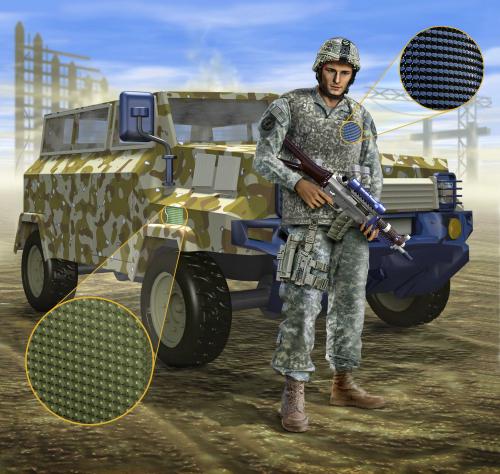Sam Lanahan, mentored by the renowned architect Buckminster Fuller, has revolutionized structural design with his invention, Flextegrity. Drawing inspiration from Fuller's tensegrity principles, Lanahan pushed the boundaries by introducing curved compression members. His exploration led to the creation of Flextegrity, a pioneering material that combines lightness, strength, and versatility. This ground-breaking material is reshaping various fields, from architecture to product design, making Lanahan a significant figure in contemporary structural design.
Flextegrity, conceived by Sam Lanahan, is a transformative development in structural design, inspired by Buckminster Fuller's principles. This novel technology is based on the concept of an omni-axial, interconnected array of compression and tension elements.
Flextegrity represents a shift from traditional frameworks. Its design leverages the icosahedron, a 20-sided polyhedron, using "curved" compression members in their construction. The real innovation lies in the strategic placement of interconnecting elements which restrain the twelve degrees of freedom. This arrangement creates a discontinuous compression in a tensile matrix.
The applications of Flextegrity are vast and varied. Its lightweight yet robust structure holds significant potential for revolutionizing architecture, infrastructure, and product design, among others. Its geometric configuration is versatile, scalable, and can be adapted to serve myriad purposes.

Flextegrity's strength lies in its innovative geometric configuration that blends the robustness of triangulation with the integrity of tensional continuity. This design principle allows Flextegrity materials to exhibit both remarkable tensile and compressive resilience, providing durability and longevity in various applications. Whether it's facing the pressures of a construction site or the stresses of a stormwater management system, Flextegrity stands strong.
The unique architecture of Flextegrity materials facilitates an extraordinary lightness without compromising structural integrity. This lightweight nature not only reduces transport and handling costs but also offers advantages in applications where weight is a critical factor, such as in aerospace, automotive, and infrastructure projects. The adaptability of Flextegrity's weight-to-performance ratio opens up a wide array of possibilities across numerous industries.


With its modular design, Flextegrity showcases unprecedented versatility. Its applications range from civil engineering and stormwater management to disaster-resistant building technologies and beyond. Its ability to be integrated into various configurations and adapt to different structural needs makes Flextegrity a game-changer in structural design, offering transformative solutions to myriad challenges across industries.
Sustainability is a cornerstone of Flextegrity's design philosophy. The optimization of geometry allows the material to leverage the maximum potential of raw materials, reducing waste and promoting efficiency. In a world where sustainability is becoming a necessity, Flextegrity offers a forward-thinking solution for resource usage, setting the stage for a more sustainable future in material design.
